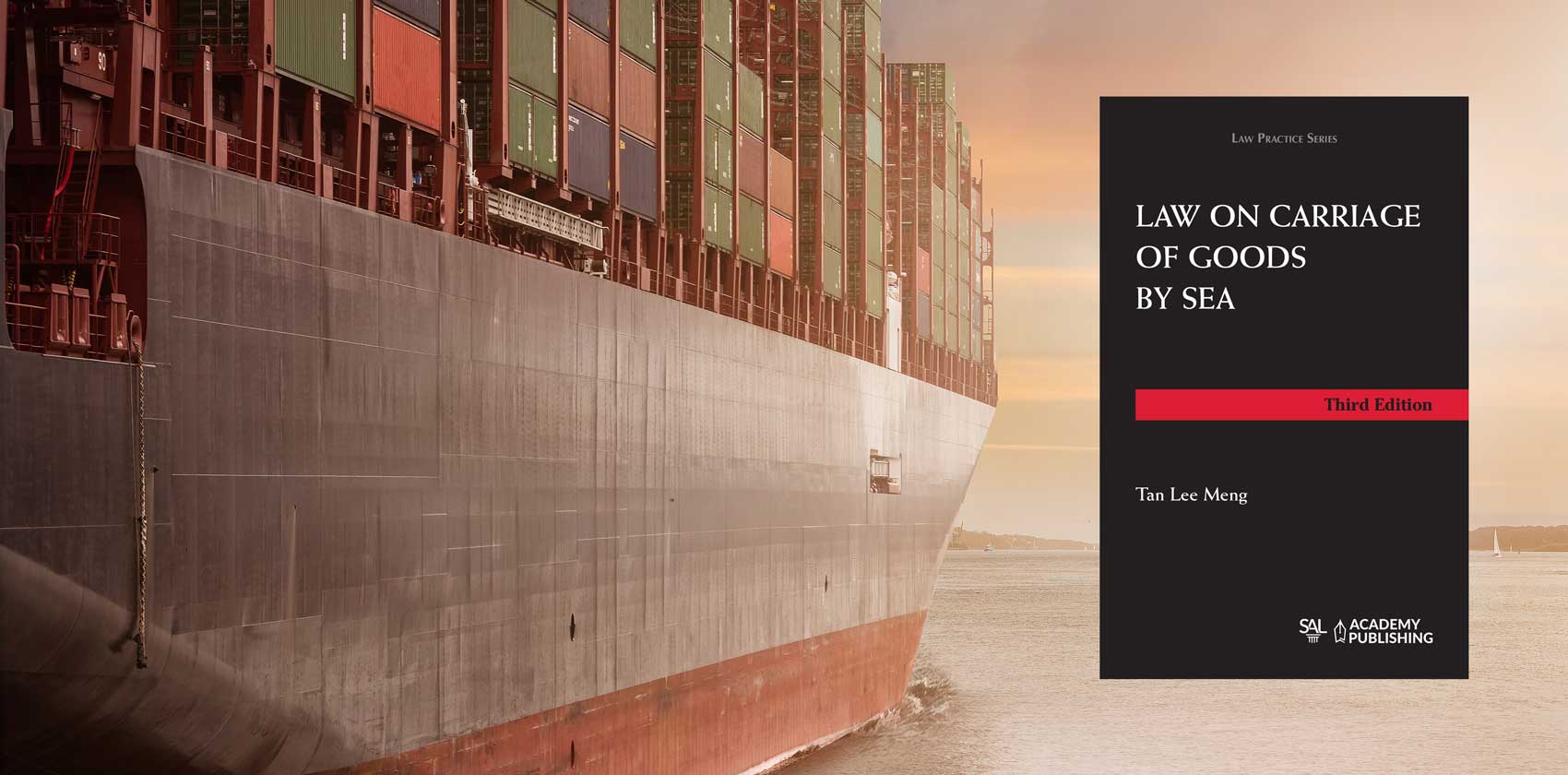Law on Carriage of Goods by Sea
The 3rd Edition of the Law on Carriage of Goods by Sea by Senior Judge Professor Tan Lee Meng is a much-awaited addition to the literature on the subject. Published by the Singapore Academy of Law, it is in various ways a more substantial piece of work compared with the Second Edition, which amply justifies the relatively long gestation period of 13 years.
For one, as the title of the book indicates, the coverage is not confined to the law of Singapore. Indeed, the new Edition contains references to numerous English cases, particularly on the subject of bills of lading and to academic readings like journal articles. Related to the subject of coverage is the re-organisation of the chapters on bills of lading and the Hague Visby Rules. Unlike the Second Edition which was published at a time when the English Carriage of Goods by Sea Act 1992 (differently titled, the Bills of Lading Act, in Singapore) was still in its nascent state, this Edition devotes an entire chapter, Chapter 7, to the legislation, gathering within its 30 odd pages, an expanding body of case law in England and Singapore interpreting the provisions thereto. The Hague Visby Rules have also been given considerably more extensive treatment, occupying five chapters in this Edition, which begin with an overview before specific treatment on, inter alia, the carrier’s dates and defences as well as limitations. Interestingly, an entire chapter out of the five is devoted to the issue of time bar under the Hague Visby Rules. Pertinently, Senior Judge Professor Tan offers the view, on which various other writers on the subject prefer ambivalence, that misdelivery claims i.e. delivery of goods without presentation of bills of lading, should be subject to the one-year time bar.
Still on the subject matter of bills of lading, one finds wider coverage on charter party bills of lading, particularly on the thorny issue of incorporation of charter party terms. There is a new chapter devoted to various issues that do not come within the ambit of the Bills of Lading Act, like the implied Brendt v Liverpool contract and bailment on terms.
Turning to the chapters on time and voyage charter parties, these have retained largely the same scope of coverage as the Second Edition. But some issues are new, such as the discussion of The Achilleas [2009], AC 61 and the disquiet it generated in subsequent decisions on the principle of assumption of responsibility. Chapter 4, which covers demise charter parties has been re-written, and now contains a succinct treatment on the difficult subject of constructive re-delivery of a demised vessel. The area of slot charter, which is specially prevalent on container vessels, would have been worthy of inclusion though.
The review of this Edition would not be complete without mention of the more attractive print layout and jacket cover.
It would be apparent from the foregoing that this Edition deserves a worthy place in the libraries of law faculties and law firms, both in Singapore and other common law jurisdictions.
To purchase click here: Law on Carriage of Goods by Sea.







